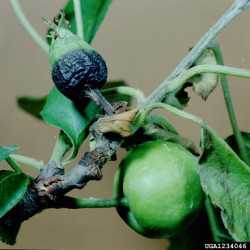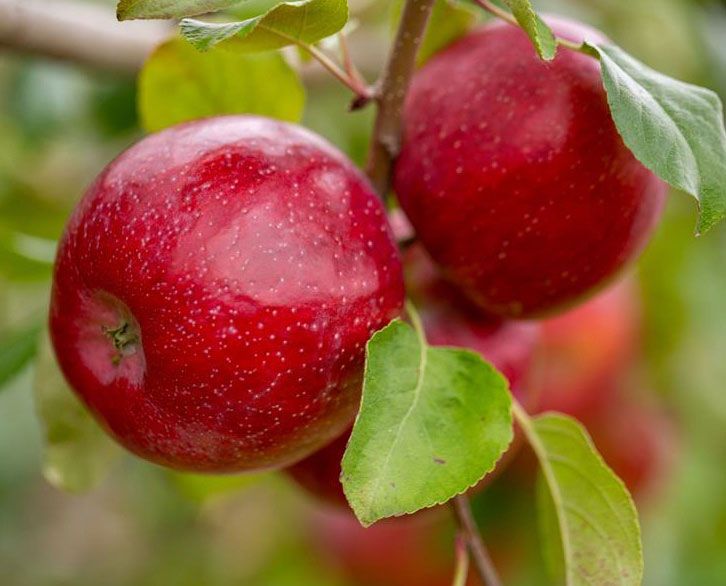Organic Growers Losing Fire Blight Tool

The National Organic Standards Board recently made the controversial recommendation to the National Organic Program to let two of the most effective antibiotics for battling fire blight in apples and pears, streptomycin and oxytetracycline, sunset out of acceptable use by Oct. 21, 2014. During this past year’s Great Lakes Fruit, Vegetable & Farm Market Expo in Grand Rapids, MI, a panel of speakers including Matt Grieshop of Michigan State University, David Granatstein of Washington State University, and Jim Koan of Almar Orchards, led a conversation that covered the effects of this decision, and the research being conducted to find alternatives.
Of the decision to phase out the use of antibiotics, an approved practice since 2002, Koan says, “There is a very big political component here in their decision to let these two materials go, which wasn’t previously based on any good science or grower input. The situation that we organic growers are in is that certain consumer groups want to get antibiotics out of organic fruit production in hopes that that idea could spread over to the conventional arena. The education of consumers to the need to use certain chemicals responsibly based on science, in order to produce food, is a necessity in today’s world.”
Granatstein explained that the bacteria travel in vascular systems and can be deadly enough to kill an entire tree. The vectors of the pest are honeybees, insects, birds, rain, wind, and hail. Although it would be ideal, there are currently no resistant pear or apple varieties. Granatstein highlights the dangers of the disease by emphasizing that under optimal conditions, fire blight can destroy an entire orchard in a single growing season.
While there has not been a lack of effort put into finding alternatives to antibiotic use to avoid dangers like Granatstein highlighted, the group explains, despite investments of more than $5 million coming from organizations like USDA-ARS, grower funding, and other groups, the success has been underwhelming. The primary three biocontrol products that are EPA registered for fire blight, and that are OMRI-approved, are Blight Ban A506 (Pseudomonas fluorescens), Bloomtime Biological (Pantoea agglomerans), and Serenade Max (Bacillus subtilis QST 713, AgraQuest). Several of the organisms in these products are antibiotic producers and have been tested extensively as stand-alone replacements for streptomycin or oxytetracycline in different regions of the country. These materials have shown promise when used in sequence with antibiotics, and were able to reduce the number of antibiotic sprays needed.
Future Options
Oregon State University researchers have been developing an integrated control concept of the disease that involves biological control followed by an antibiotic method. This method achieved control similar to an antibiotic-only practice, but only reduced the application by half, said Granatstein.
Another option for growers who will no longer be able to use antibiotic methods is a biocontrol material that was commercialized in Germany and is now being tested in the U.S. Blossom Protect (distributed by Westbridge Agricultural Products) is a live formulation of Aureobasidium pullulans, a yeast that is commonly found growing naturally in orchards. Trials in Oregon have shown that the use of Bloomtime Biological followed by Blossom Protect battled fire blight in a similar manner to that of antibiotics. The use of lime sulfur plus fish oil with organic fruit thinning are also on the table as possible methods of fire blight control.
In Washington, researchers have conducted field trials that found Blossom Protect provided similar control to that of oxytetracycline on apples. One year of testing on pears in California yielded positive results as well. In Michigan, however, the product only provided 63% to 64% control, much less than the streptomycin average of 97% to 98%.
Another option on the table is copper. Copper products used in the dormant season suppress the damage done by fire blight in tree cankers. The use of these formulations during bloom has yielded positive results, although more experience is needed to better understand the effects this would have on fruit russetting. In addition, said Granatstein, the effects of the heavy metals on the soil renders this type of treatment unacceptable for long-term use for organic production.









